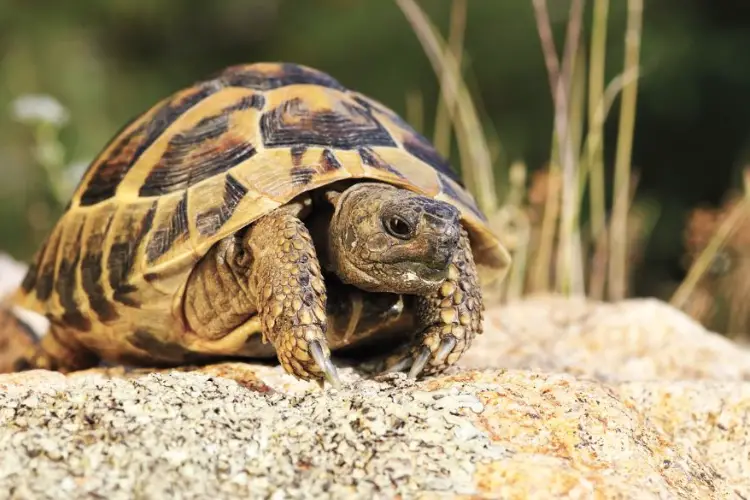Why Is My Turtle Not Moving And Staying In One Spot?
You may notice that your pet turtle is not moving and start getting worried that something bad may have happened to it. Could it be sick? Or, in the worst-case scenario, could it be dead?
Why is my turtle not moving? Your turtle not moving could be due to a variety of reasons, including loss of appetite, overfeeding, sickness, pregnancy, laziness, or it could simply be hibernating.
In this guide, we have shared more insights into why your turtle isn’t showing any movements and what you can do in such cases. You’ll also learn how to tell when your turtle friend is hibernating.
Why is my turtle not moving?
Contents
Below are the most common reasons why your turtle is not moving:

A sick turtle might make your turtle remain inactive
Many health issues that affect turtles may also cause them to stay in one place. If your pet turtle has a bacterial infection or illnesses such as swelling in the eyes, eyes, or shell regions, or abscesses, it might remain inactive.
A respiratory infection may also cause your turtle to not want to swim or move.
Check for abnormal growth in the different areas of your pet body including reddish skin on the lower side of its body, cuts, wounds, holes in the shell, etc. All these also affect the reptile’s health and make it stay in one place.
If your turtle shows any of the above signs of being sick, consider taking it to the vet to help diagnose the problem and offer the best treatment for your pet.
Loss of appetite
How had your turtle eating habits been lately? If it has lost its appetite, it could be the reason it is not moving as much as before. Instead, it might choose to stay in its basking area and not swim.
Loss of appetite in turtles is usually associated with an illness, though sometimes they might not like the food you’re giving them. Try changing the food you feed your turtle to see if they’ll resume eating.
Overfeeding (or a bad diet) might be the culprit
If you have been overfeeding your turtle lately, it could be another possible reason why they prefer to stay in one corner and not swim or move around.
To solve this problem, start feeding your turtle with the right amount of food.
The size of the turtle method will help you easily feed them the right quantity of food. get a container with approx. the same size as your turtle’s head (minus the neck).
Fill the container with food to the top. This is the healthy amount of food to feed your pet daily.
You should also be mindful of the type of food you give to the turtle. Most turtles are omnivorous and will feed on meat, fish, veggies, fruits, and dried insects.
A stressed turtle may stay still
Turtles get easily stressed, whether it’s due to loud noise, improper handling, other pets, etc. As a result, they may stop eating, basking, and even moving around.
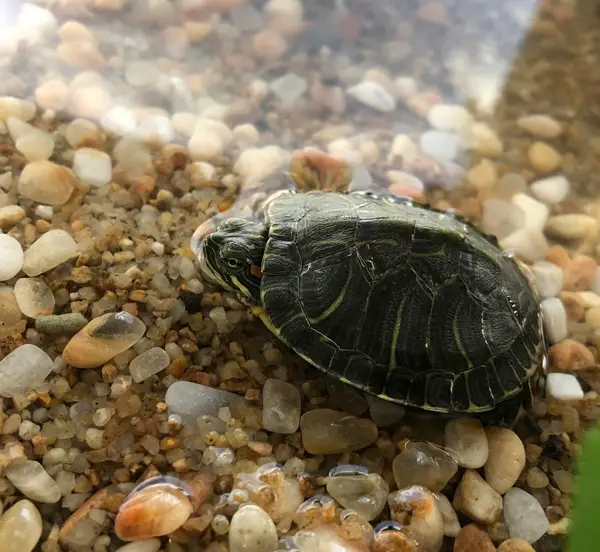
We suggest eliminating all the likely stress sources. This will help your turtle calm down and they should be able to resume their normal behavior.
Your turtle is scared
A scared turtle will also start behaving abnormally, and might not move around as much. One way turtles get scared is if they’re moved from one place to another (especially via mail).
If you suspect this is why your turtle isn’t moving, give it time to get used to its new environment. This can take up to a week and they will start to act normal again.
Your turtle could be pregnant
A pregnant pet or wild turtle may experience appetite loss, further making it remain inactive for long hours or even days.
When the female turtles are about to lay eggs, they tend to act strange. They stop eating and moving around. Heck, they might even try to escape their tank!
Look for additional tell-tale signs of a pregnant turtle to help you decide whether your turtle is staying in one spot because it is pregnant.
Laziness
Laziness, probably resulting from boredom, may also make your turtle not want to move around. This is especially common for tanks with only one turtle.
Exercise is important for your turtle’s health and significantly helps with their physical and mental health.
If you only live alone in the tank, consider getting a companion to keep them entertained. Introducing toys and games in the terrarium will also help keep them from getting bored.
What if your turtle is not moving or eating?
If you have noticed that your turtle is not moving or eating for a couple of days, this is your part.
Your turtle may be suffering from diet deficiencies, respiratory illness, parasites, and other health issues. These illnesses tend to drastically reduce the animal’s movement and energy levels, so your turtle may stop moving or eating food.
In this case, you may try feeding your turtle a different type of turtle food. If they still don’t want to eat, consider taking them to your vet.
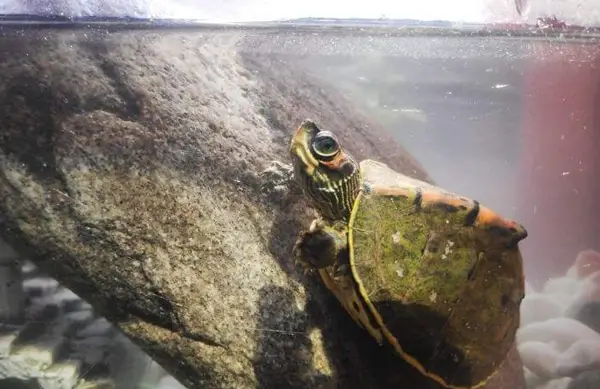
Remember, turtles are pretty good at hiding their symptoms when they fall sick. this can give you a hard time deciding if a turtle is suffering from a health-related issue.
Why is my turtle floating and not moving?
In case you find your aquatic turtle floating and not moving at all, it could be basking. During basking, the turtle is simply taking a nap and will sleep relaxed with its limbs extended outside its shell.
But how can you tell for sure that the turtle is basking and not sick as the reason for floating and staying still? Check where it is basking.
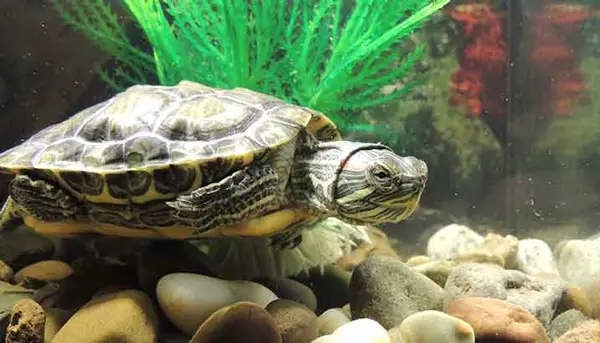
If it does so in the area under the light, then it is simply sunning. This is based on the fact that turtles only bask in their specific area or if kept outside under the direct sun.
How to know if your turtle is brumating?
We mentioned that turtle brumation, also known as hibernation, is one of the reasons why your turtle won’t move around.
But how can you tell brumating is the reason your pet is not moving around and not an illness or any other reason?
A turtle enters the brumation state when the turtle tank water temperature falls below 50 degrees Fahrenheit (10 10°C). During hibernation, the reptile enters a deep sleep state and won’t move at all.
As such, the simplest way to know if your turtle is to check the room and water temp—if it’s 50 °F, your pet is definitely brumating!
Another way to tell if your turtle is brumating and not sick is picking it up with your hands. A brumating turtle sleeps with its legs tucked into its shell and they retain its full muscle control.
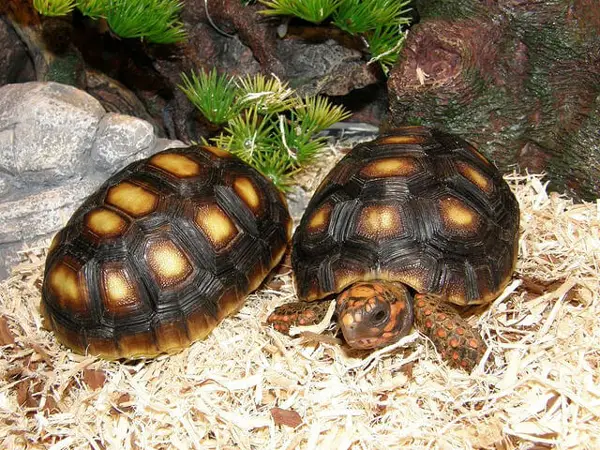
If your turtle’s limbs fall down after you pick it up, or if it’s sleeping with its legs unrestricted, then it’s definitely not hibernating!
Also, if you keep your turtle indoor, where the room temperatures are maintained, then the chances of hibernation are pretty low.
However, keeping the room temperature quite low for long periods can cause hibernation, so you must consider this.
Why is my baby turtle not moving?
You may also notice that your baby turtle isn’t moving much. This is mostly normal for new baby turtles and happens due to a change of habitat which can easily stress them. They may get easily freighted and stressed.
The only thing you can do here is given them time to adjust to their new habitat. Additionally, you may want to place their terrarium away from an area that receives a lot of traffic in your house, loud noise, and other pets that may frighten them.
The baby turtles may also not move due to disease, just like the adult turtles. be on the lookout for possible signs of sickness in your baby turtle and visit your vet for professional advice on the cause of the underlying condition.

Young turtles, below the age of 3, usually don’t undergo brumation. They don’t have the necessary energy reserves required for them to successfully undergo this process.
Thus, you should rule out brumation as a possible reason your baby turtle isn’t moving. But if you still suspect it could be hibernating, we advise you to take it to the vet for professional examination and advice.
What to do if your turtle is not moving?
If you find out the reason your turtle isn’t moving is that it is brumating, we advise you to leave them alone. Remember this is a physiological and natural process for reptiles to survive cold winter months and will not cause any harm to them.
BUT…if your pet turtle had undergone surgery or fallen sick in the previous sickness, you may want to keep it from brumating. The low temperatures may hinder its immune system and this may cause serious problems to its health.
Young turtles, too, shouldn’t undergo brumation. They lack adequate energy reserves to undergo this process. And you must do anything possible to keep them from hibernating.
If you suspect your baby turtle is going into brumation, consult your vet for professional advice on whether it is okay for them to do it.
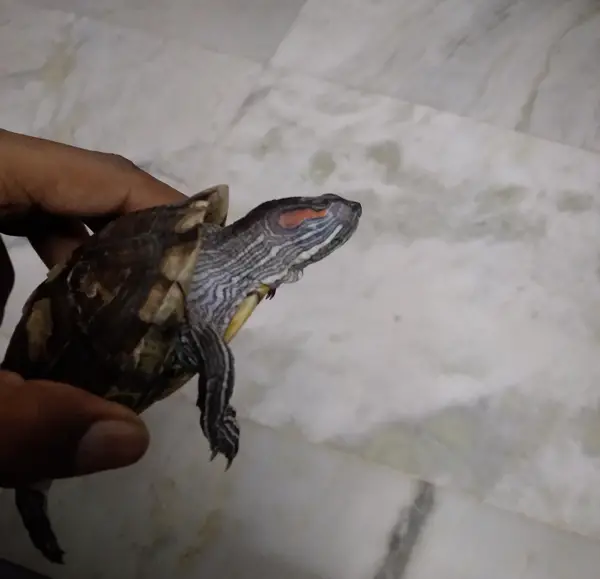
After you have ruled out hibernation in your turtle as the reason behind your turtle, your remaining course of action is to go to a trusted vet to help you determine the reason behind your pet’s inactivity. Professional vets will most likely assess environmental conditions as well as your pet’s diet to decide if poor sanitary conditions are to blame for the condition.
The vet will also take your turtle friend through examination for signs that will help with the diagnosis of an underlying condition.
If the physical tests don’t yield much, the vet may resort to additional tests (lab tests, imaging tests, etc.) to reach a more definitive diagnosis to enable them to administer the right treatment for your pet.
Related questions (FAQs):
- Why is my Snapping turtle not moving?
The most likely reason why your snapping turtle is not moving is due to hibernation. It could also be one of the signs of illness, such as respiratory infection or other turtle diseases.
If you think your turtle is sick and not brumating, take it to the vet to help with diagnosing the underlying condition and the possible cause.
- How do I know if my turtle is dead?
If your turtle has stayed inactive for days and you suspect it is dead, try lifting it up and moving it its legs away from its body gently. If it doesn’t react to this movement and retract its legs further inside the shell, then it is likely dead.
If the animal’s head and legs droop and wobble, it also indicates they might be dead.
You can also try placing the turtle in a room-temperature soaking bath; if he/she doesn’t react, it means he/she is dead.
A bad odor, sunken eyes, sunken and shrived skin, and cold-to-touch are all additional signs of a dead turtle.
Final Word
That’s it about deterring why your turtle isn’t moving. The turtle may fail to move and stay inactive due to brumation, which is a natural process and doesn’t cause any harm to them.
The only time you should be concerned your turtle isn’t moving is when you’ve ruled out brumation. The cause of inactivity could be an underlying condition.
In this case, we advise you to take your pet to a vet for diagnosis to determine the cause of the health problem and establish the right treatment to help your turtle regain its health.


